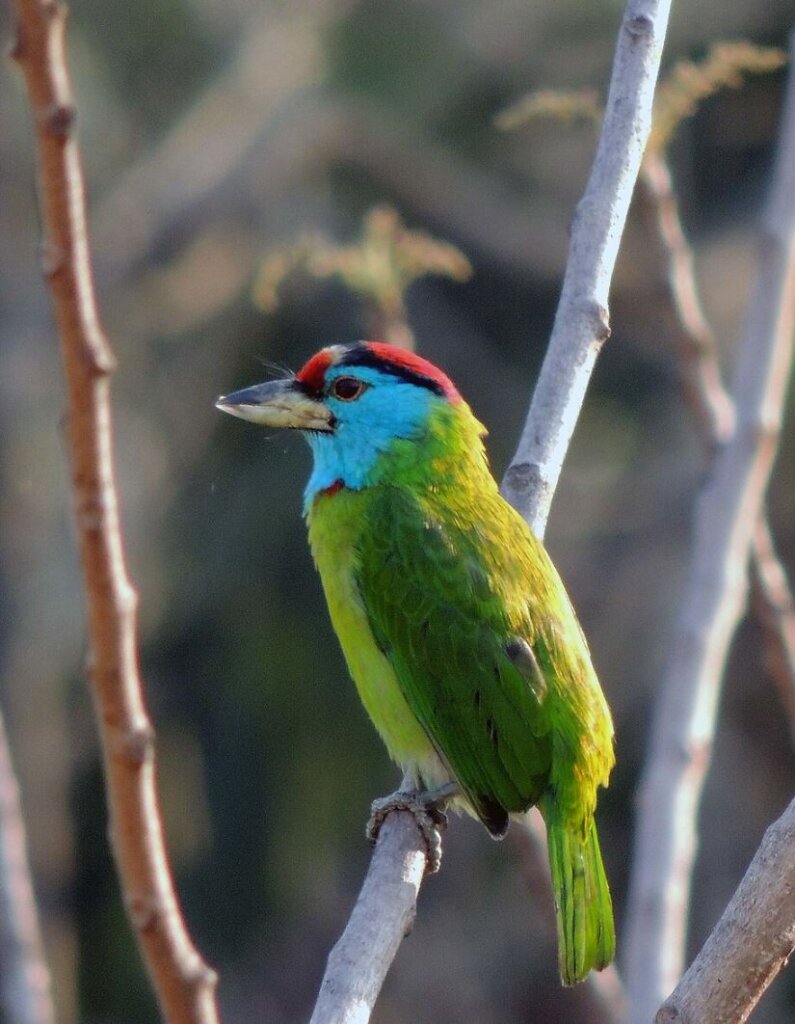A brightly colored bird who often sings brightly but often unseen from the canopy; listen for his repeated 3- or 4-syllabled ‘took-o-rrook!’
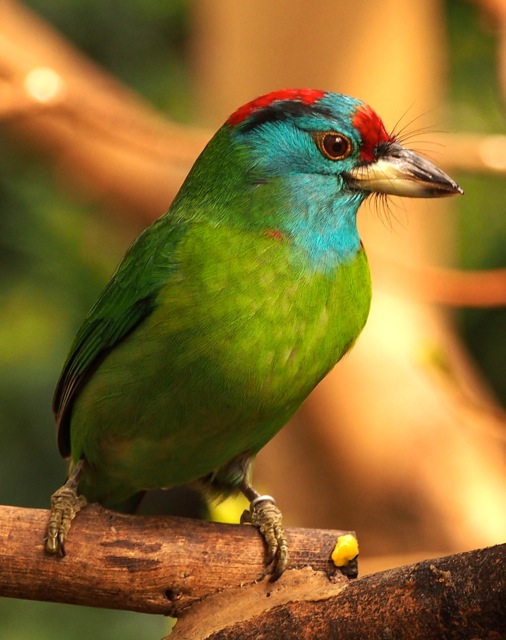
The blue-throated barbet (Psilopogon asiaticus) measures between 9 – 11 inches (23 – 28 cm) in length, including the tail, and weighs in at 2.7 – 3.6 oz (78 – 103 g). Overall, these birds have generally green plumage topped off by a bright blue throat and face. The forehead is red and the cap red edged in black, giving the appearance of eyebrows. The forehead and cap are divided by a patch of pale blue. There are also two small patches of red on either side of the throat. The wings and upper tail area are green while the under parts are yellow-green. The under tail is blue-green, and the heavy-looking ivory-colored bill is fringed with bristles. The eyes are brown, the feet gray.
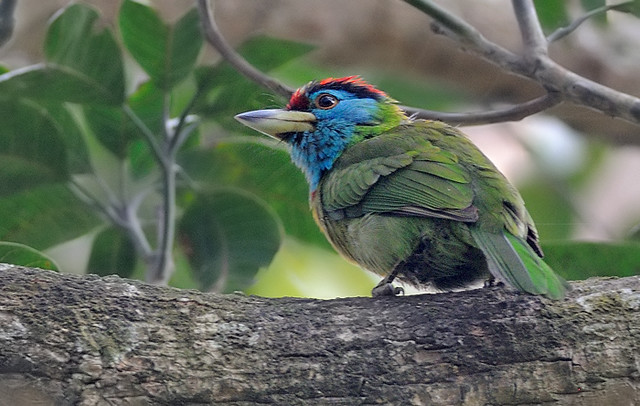
Both male and female birds look very similar.
Juvenile birds look similar to adult birds but are paler overall.
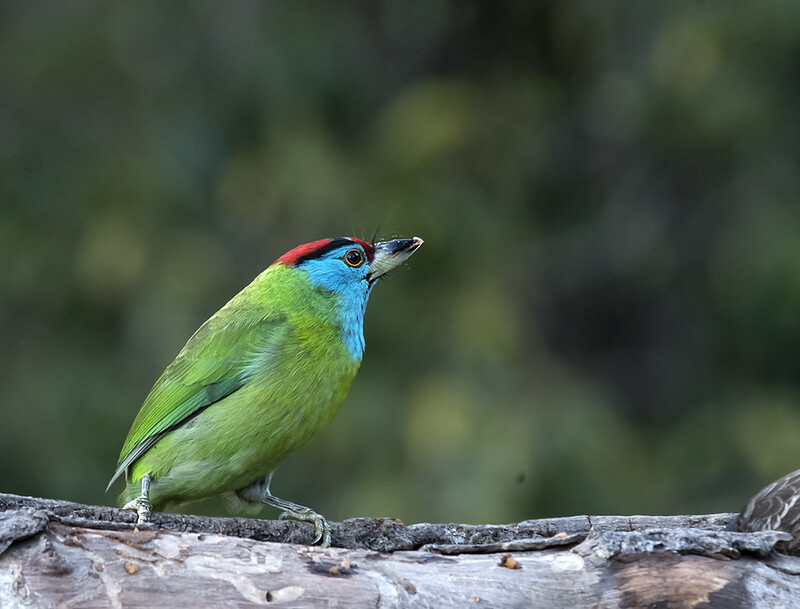
An Asian barbet, these birds are native to the foothills of the Himalayas and Southeast Asia.
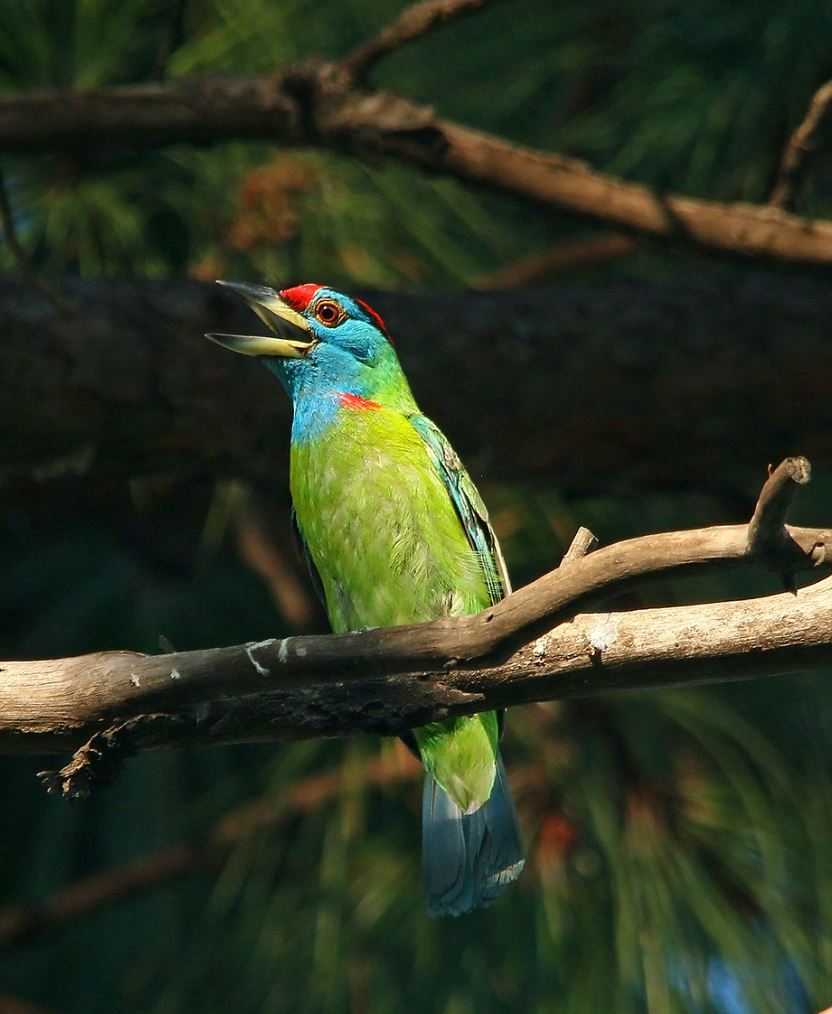
These birds are dependent on forested areas around 200 to 2000 meters high including lowland forests, subtropical tropical montane forests, primary and secondary forests, and deciduous forests. They can also be found in and around plantations, rural gardens, and urban parks and orchards.
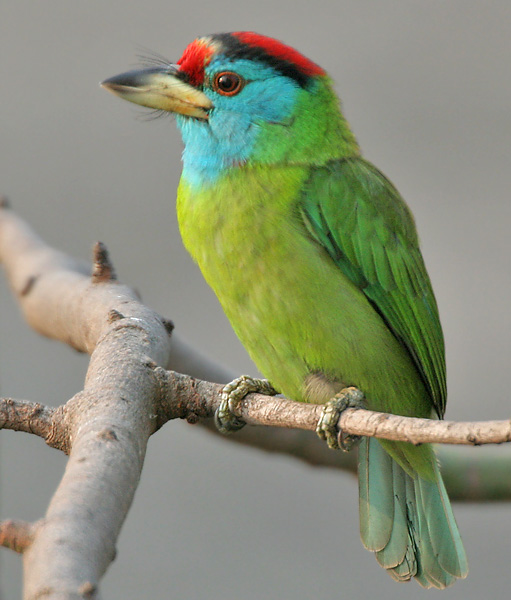
Blue-throated barbet is often found in the forest canopy dining on figs, insects, and some flowers. Though they will sometimes venture down to lower shrubs and bushes to feed.
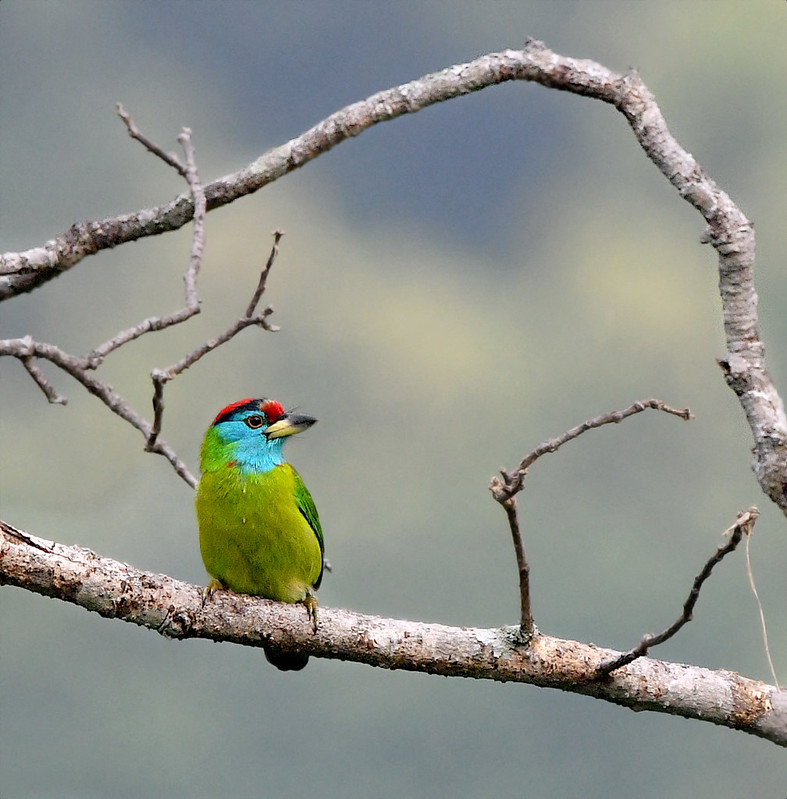
These birds breed from March through to July when a nest hole is excavated about 1.5 meters above the ground, usually on the underside of a dead branch which is lined with grass, wool, and other plant material. 2 to 5 eggs are laid within which are in turn incubated by both parents for around 14 days. Both parents will also feed the chicks once they have hatched and become fledged after 30 60 40 days.
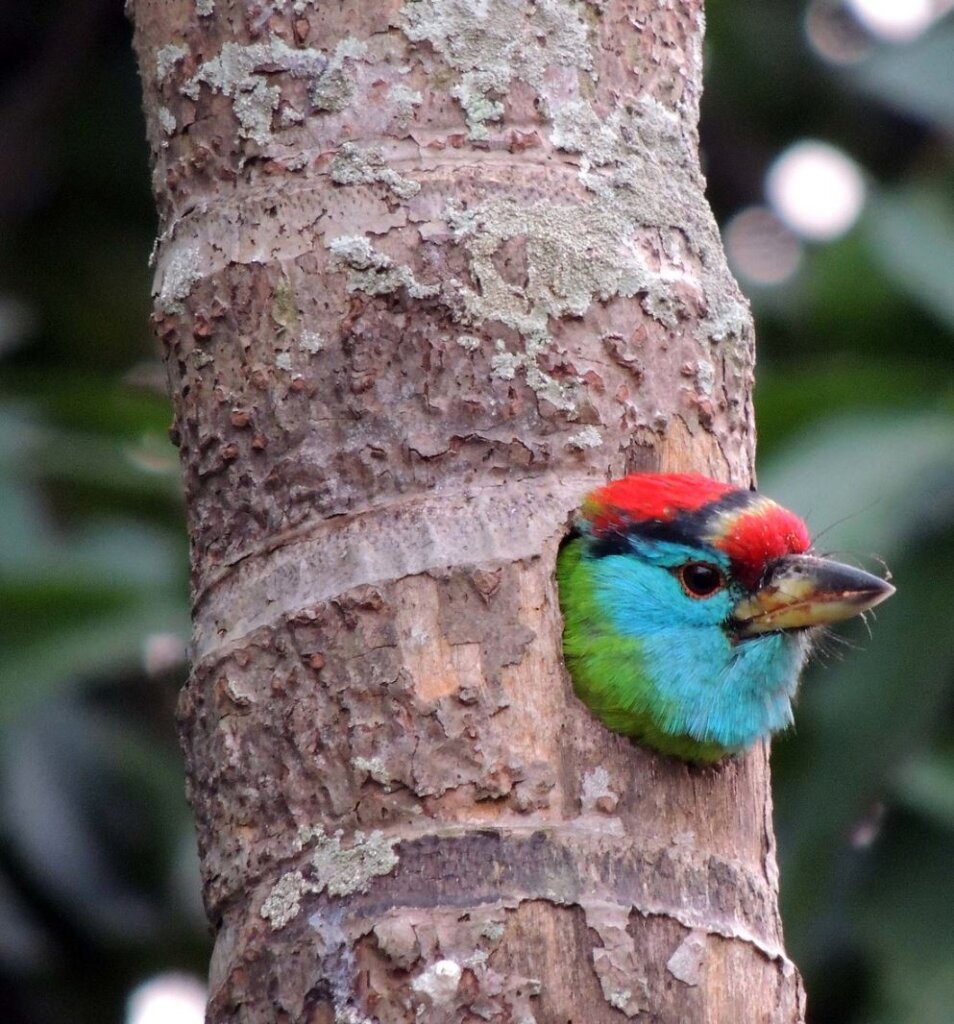
Photo (cropped) Courtesy of nbu2012 / CC BY 2.0
The global population size of the blue-throated barbet (Psilopogon asiaticus) has not been quantified. Throughout its range, this barbet species is reported to be common. Its distribution size is about 4,020,000 sq.km.
